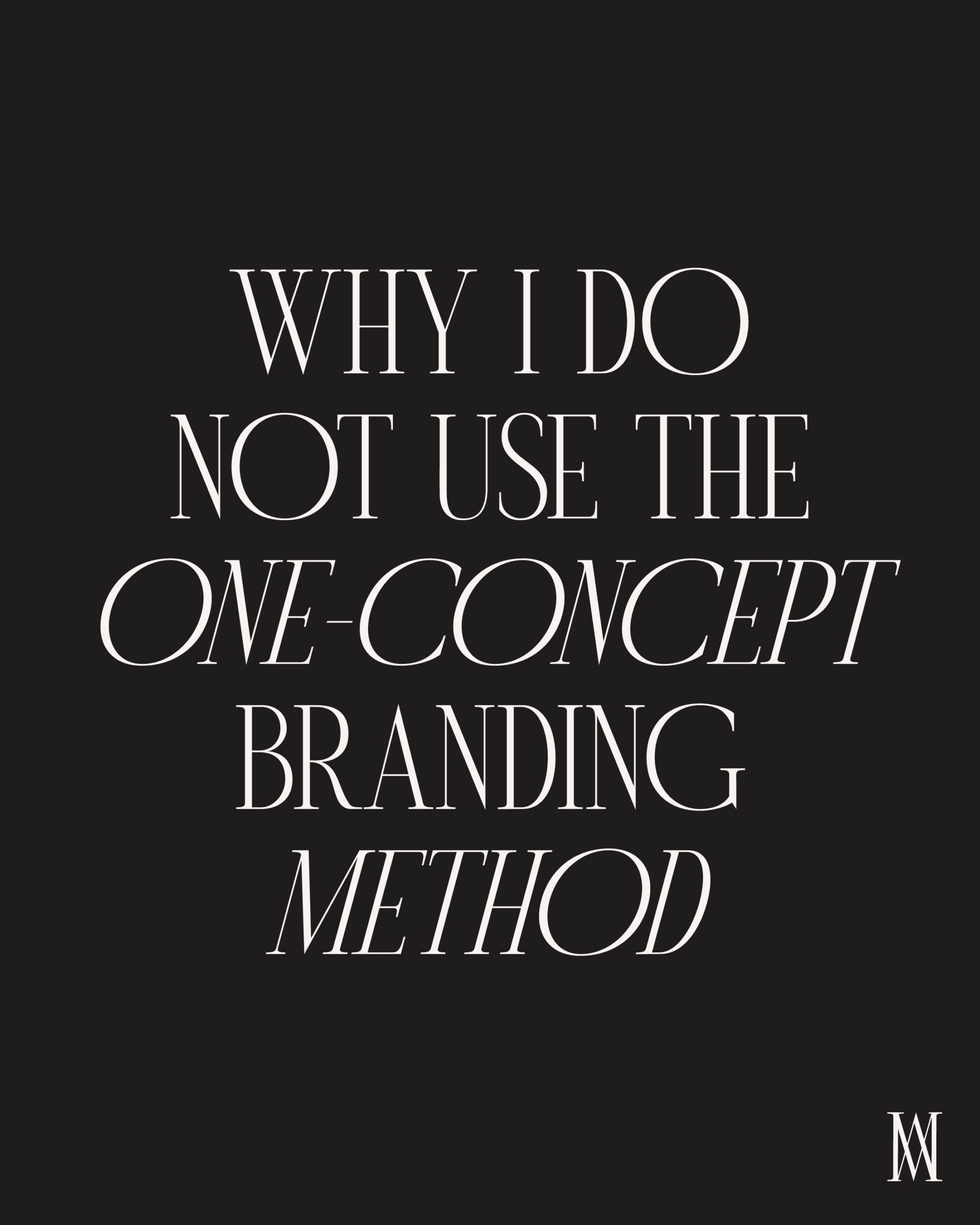In recent years, I’ve seen a lot of brand design studios switch over to “The One Concept” method for their branding projects. I would even say it’s become trendy. To quickly summarize, this approach argues in favor of delivering only one creative concept to the client, supposedly “the best” and “strongest” idea out of the many ideas the designer explored behind the scenes.
While I’m not saying that the one concept approach doesn’t work for many studios, because I recognize there is no one right way to design, I want to explain today why I personally do not follow this approach, and instead offer my clients multiple creative concepts, usually three, when we work together.
The first issue that I have with the one-concept approach is that design is not math, or in other words, there isn’t just one “right” solution to a problem. A brand designer’s task is to create a visual representation of the brand identity. If you give the same project brief to 10 different experienced designers, all of them will come up with something different, yet all their iterations might meet the objectives and provide a solution in a different way. There is more than one way to interpret a brand’s personality.
As much as we try to bridge the gap between the brand identity and the target audience through brand visuals and to keep it objective, design is still and will always have a subjective element to it. A creative concept might meet all the objectives for a branding project, but if the client doesn’t like it, it will never pass the bar. We use brand strategy to decrease the influence of subjectivity, but in the end, brand design is still subjective in several ways and we must not forget that.
The second issue I have is that clients want options because they want to have a voice in the process of developing their brand, and this is especially true in the business culture in the Middle East where clients often want to see tangible value for their money, struggling to see beyond the abstractness of how one concept could be better than three. Of course, too much client involvement can snowball into problems, such as when what a client likes is at odds with “good design”, but an experienced designer should be able to navigate through this and develop concepts that everyone will be happy with. I am very clear with my clients, from the first consultation, that my process is about letting strategy dictate design decisions, not our personal tastes, because objectivity is key to an impactful brand design. However, I’m not insensitive to the subjective nature of design either. Ultimately my goal for every project is that everyone will love the design: the client, their target audience, and myself. The overlap between those three is the sweet spot!
All that being said, I fully understand that too many choices can make a client feel overwhelmed and can quickly turn into indecisiveness. Presenting multiple options doesn’t mean presenting every single idea I explore, nor does it mean that my process doesn’t have clear boundaries, and nor does it mean presenting bad work. It simply recognizes subjectivity in brand design. It’s provides some wiggle room between what I like and what the client likes. In the end, I present only the best options to my clients and explain why the concepts meet the objectives, perhaps in different ways, as we’ve defined in the brand strategy phase. If a designer has developed multiple concepts that objectively tick all the right boxes, and they are only presenting one concept to the client (the one that THEY think is the best) then they are depriving the client of their right to collaboration and choice and seriously underestimating and devaluing the subjective element in design.

Comments